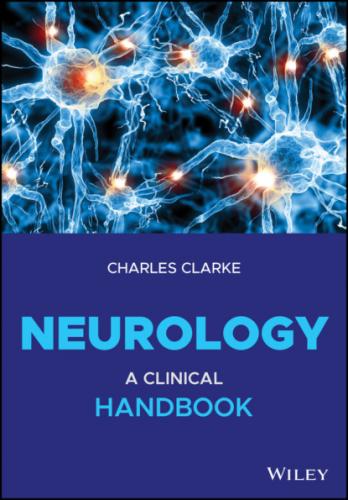Common mononeuropathies are easy to recognise once seen, such as ulnar, median, radial, common peroneal (lateral popliteal), lateral cutaneous nerve of the thigh and sural nerve lesions. Cranial nerves are discussed in Chapter 13.
Multiple mononeuropathy means two or more peripheral nerve lesions. Principal causes are leprosy, diabetes, hereditary neuropathy with liability to pressure palsies (HNPP), and vasculitis such as polyarteritis.
Polyneuropathy a.k.a. peripheral neuropathy describes conditions in which nerves die back, usually symmetrically to cause peripheral (hands and feet) sensory loss, muscle weakness and wasting with loss of tendon reflexes.
Neurogenic Muscle Wasting
The crux is to distinguish between:
Generalised thinning, normal in old age and seen in cachexia – power is normal
Widespread wasting seen in MND, polyneuropathy
Focal wasting with denervation.
Seek out sites of predilection:
Small hand muscles (T1)
Guttering of forearm flexors
Wasted anterior tibial compartment – lateral to the leading edge of the tibia
Wasted extensor digitorum brevis muscles – small oyster‐like muscles below each lateral malleolus.
Muscles with normal bulk, consistency and power are usually normal electrophysiologically and histologically.
Root Lesions
Characteristics are:
Root pain
Wasting and muscle weakness
Sensory loss, and
Loss/depression of deep tendon reflex(es).
A root lesion is often called radiculopathy when this is part of an inflammatory, vascular or neoplastic process with derivatives such as polyradiculomyelopathy. I prefer the shorter English word root. A cervical or lumbar root lesion usually implies compression, often from a disc. Movements, root values, muscles and nerves are summarised in Table 4.4.
Table 4.4 Movement, root value, muscle & nerve.
| Movement | Root | Muscle | Nerve |
|---|---|---|---|
| Shoulder abduction | C5, (C6) | Deltoid (also supraspinatus) | Axillary |
| Elbow flexion (supinated) | (C5), C6 | Biceps | Musculocutaneous |
| Elbow flexion (mid‐prone) | C5, (C6) | Brachioradialis | Radial |
| Wrist extension | (C6), C7, (C8) | Triceps | Radial |
| Tip of thumb & index finger flexion | C7, C8 | Flexor pollicis and digitorum profundus I, II | Median |
| Tip of ring & Vth finger flexion | C8 | Flexor digitorum profundus IV, V | Ulnar |
| Thumb abduction | T1 | Abductor pollicis brevis | Median |
| Finger abduction | T1 | Dorsal interossei | Ulnar |
| Finger flexion | (C7), C8, (T1) | Long and short flexors | Median and ulnar |
| Hip flexion | L1, L2, (L3) | Iliopsoas | Nerve to iliopsoas |
| Hip adduction | L2, L3, L4 | Adductor magnus | Obturator |
| Knee extension | L3, L4 | Quadriceps femoris | Femoral |
| Ankle dorsiflexion | L4, L5 | Tibialis anterior | Deep peroneal |
| Big toe extension | L5, (S1) | Extensor hallucis longus | Deep peroneal |
| Ankle eversion | L5, S1 | Peroneal muscles | Superficial peroneal |
| Ankle inversion | L4, L5 | Tibialis posterior | Tibial |
| Ankle plantar flexion | S1, S2 | Gastrocnemius, soleus | Posterior tibial |
| Knee flexion | S1, (S2) | Hamstrings | Sciatic |
| Hip extension | S1, (S2) | Gluteus maximus | Inferior gluteal |
Root pain caused by distortion or stretching of meninges surrounding a root is perceived both in the myotome and the dermatome. This is relevant in C7 root compression: pain can be felt deep to the scapula (C7 muscles) while the sensory disturbance runs to the middle finger (C7 dermatome). The triceps jerk is lost. See Chapters 10 and 16.
Cauda Equina Syndrome
The cauda equina (horse’s tail) is the leash of roots emanating from the lower end of the cord. Cauda equina compression (e.g. central L4/L5 disc) affects all lumbo‐sacral roots streaming caudally. There is loss of bladder and bowel control, buttock and thigh (saddle) numbness with weakness of ankle dorsiflexion (L4), toes (L4, L5), eversion
